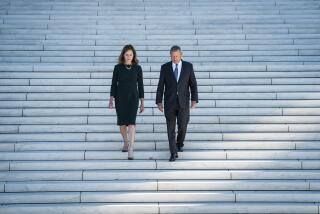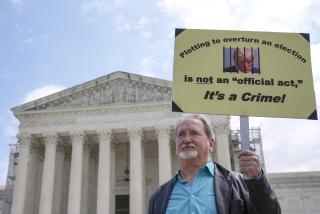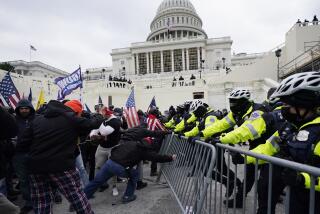Supreme Court limits ‘exclusionary rule’
WASHINGTON — The Supreme Court pulled back on the “exclusionary rule” Wednesday and ruled that evidence from an illegal search can be used if a police officer made an innocent mistake.
The 5-4 opinion signals that the court is ready to rethink this key rule in criminal law and restrict its reach. It will also give prosecutors and judges nationwide more leeway to make use of evidence that may have been seen as questionable before.
Chief Justice John G. Roberts Jr. said the guilty should not “go free” just because a computer error or a misunderstanding between police officers led to a wrongful arrest or search.
He said good evidence, even if obtained in a bad search, can be used against a suspect unless the police deliberately or recklessly violated his rights.
The exclusionary rule was applied to state and local police in 1961, and its aim was to deter officers from conducting unconstitutional searches of homes, cars and pedestrians. Usually, it means that illegally seized evidence must be excluded.
But in Wednesday’s opinion, Roberts said that “the benefits . . . must outweigh the costs.” And there is nothing to be gained, he said, by throwing out evidence when officers make honest mistakes.
The ruling upheld the drug and gun charges against an Alabama man who was stopped by a sheriff’s department officer who had been told -- erroneously -- there was an outstanding warrant for his arrest.
The officer, Mark Anderson, had called and been told by a clerk in a neighboring county that Bennie Dean Herring had failed to appear in court on a felony charge. But minutes after Anderson found methamphetamine and a pistol in Herring’s car, the clerk called back to say the arrest warrant had been withdrawn. This fact had not been entered into the sheriff’s department’s computer.
Roberts said the mistake here was a “negligent bookkeeping error.” It did not reflect an officer’s deliberate decision to violate the rights of the motorist, he said.
Justices Antonin Scalia, Anthony M. Kennedy, Clarence Thomas and Samuel A. Alito Jr. joined the chief justice.
The dissenters said the exclusionary rule should be strictly enforced. “Electronic databases form the nervous system of contemporary criminal justice operations,” Justice Ruth Bader Ginsburg wrote. “The most serious impact of the court’s holding will be on innocent persons wrongfully arrested based on erroneous information carelessly maintained in a computer database.”
The exclusionary rule has long been controversial. It was imposed on federal courts in 1914 to deter violations of the 4th Amendment and its ban on “unreasonable searches and seizures.”
In the 1980s, the court retreated somewhat and said there was a “good faith exception” for officers who conduct searches with warrants they believe are valid. In 1995, it said that if the judicial system makes an error that leads to a wrongful arrest, the evidence need not be suppressed.
The new ruling, in Herring vs. United States, goes a step further and allows the use of illegally obtained evidence even when the mistake arises from the law enforcement agency.
John Wesley Hall, the president of the National Assn. of Criminal Defense Lawyers, said the ruling would “reward sloppy police work. They should call it the ‘Barney Fife’ exception to the 4th Amendment,” an allusion to the TV lawman played by Don Knotts.
In a second decision, the court said judges may impose long consecutive sentences for criminals who are convicted of several crimes and without consulting the jury.
The court has said juries, not judges, need to decide the key issues that result in a long prison term.
But in a 5-4 ruling, the court said it would leave it to judges to decide whether a criminal should serve extra time for each violation.
--
More to Read
Sign up for Essential California
The most important California stories and recommendations in your inbox every morning.
You may occasionally receive promotional content from the Los Angeles Times.











